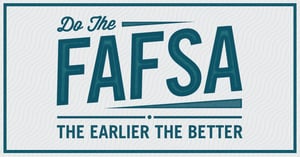Filing FAFSA, filling in a College Scholarship profile or just finding out all you can about student debt forgiveness programs? Here is some information specific to ABLE Accounts, Special Needs Trusts, Social Security Benefits and the student loan process.
Before we get started, a special shout-out to Mary Rubenis of the Massachusetts Educational Financing Authority (MEFA), sponsors of the Attainable Savings PlanSM for contributing her insight and key information.
A Little Background Info about the ABLE Account & Special Needs Trusts:
The ABLE (or 529A) account is a tax advantaged account for individuals with a disability to pay for qualified disability expenses. Unlike a typical 529 plan which requires funds be spent on qualified higher education expenses, the funds in an ABLE account may be used to pay for qualified expenses related to living with a disability. Qualified disability expenses may include education, transportation, housing, employment training and support, personal support services, health, basic living and assisted technologies and related support.
As of 2018, it is allowable to rollover up to $15,000/year from a beneficiary’s 529 account into their own or their family member’s ABLE account without penalty. To read about the basics of the ABLE account, as well as suggested strategies and case studies that use the ABLE, click here.
A Special Needs Trust (SNT), also called a supplemental needs trust, is a vehicle to provide monetary support for a beneficiary without effecting their eligibility for needs-based government benefits, e.g. Social Security Income and Medicaid. The beneficiary will not have access or control over the money in a SNT.
3 Financial Aid Facts
1. Reporting requirements for Free Application for Federal Student Aid (FAFSA)
 Guidance from the Federal Student Aid Office states that ABLE accounts, along with interest income and distributions, should be excluded as assets on the beneficiary’s FAFSA. ABLE accounts were created to supplement, and not to replace, eligibility for federal means-tested benefit programs. ABLE accounts would also not be reported on a sibling’s FAFSA, as the assets are considered those of the beneficiary, not the parents.
Guidance from the Federal Student Aid Office states that ABLE accounts, along with interest income and distributions, should be excluded as assets on the beneficiary’s FAFSA. ABLE accounts were created to supplement, and not to replace, eligibility for federal means-tested benefit programs. ABLE accounts would also not be reported on a sibling’s FAFSA, as the assets are considered those of the beneficiary, not the parents.
SNTs are treated as any other trust fund for the purposes of FAFSA and need to be reported. Restrictions on distributions from a SNT are imposed by the grantor of the trust and unless specifically excluded, these funds may be dispensed by the trustee to pay for educational expenses for the beneficiary. The assets in the SNT are not included on the beneficiary’s siblings’ FAFSA.
Social Security benefits that are not subject to taxation do not have to be included on FAFSA. SSI recipient’s income levels are generally below the taxable threshold, so SSI generally does not need to be reported. If you receive SSDI and have substantial income, your benefits may be taxed at the federal level. For example, if you are single and your income is more than $25,000 per year but less than $34,000, you would have to pay taxes on about half the value of your benefits. If you earn more than $34,000 (or married and earn more than $44,000), 85% of your benefits could be taxed.
2. Reporting Requirements for College Scholarship Service (CSS ) Profile
The Federal Student Aid Office has not yet provided guidance on reporting assets in a SNT or ABLE. Currently, the CSS/Financial Aid Profile does require reporting the assets of siblings and may require the disclosure of assets in a SNT and ABLE. In these circumstances, families should give details of how these funds are used in the special circumstances section of the application and ask each college for a professional judgment review. While some financial aid departments will ignore the assets in the trust, most will not. They may however, consider the high costs of dependent care when making their grant determinations.
3. Student Loan Repayment
 If their student loan covers a time period during which the individual had an ABLE account open, repayment may be considered a Qualified Disability Expense and be paid from the ABLE.
If their student loan covers a time period during which the individual had an ABLE account open, repayment may be considered a Qualified Disability Expense and be paid from the ABLE.
If you become totally and permanently disabled (TPD), you may qualify for a TPD discharge of your federal student loans. Refer to DisabilityDischarge.com for more information.
Also, If you are employed by a government or not-for-profit organization, you may be able to receive loan forgiveness under the Public Service Loan Forgiveness Program. Refer to StudentAid.ed.gov for more information.
Sources:
MEFA, Massachusetts Educational Financing Authority
Fidelity Investments, Attainable Savings Account
Evisors.com
Ableforalll.com
Nolo.com
Content in this material is for general information only and not intended to provide specific advice or recommendations for any individual, nor intended to be a substitute for specific individualized tax or legal advice. We suggest that you discuss your specific situation with a qualified tax or legal advisor.
Prior to investing in an ABLE or 529 account investors should consider whether the investor’s or designated beneficiary’s home state offers any state tax or other benefits that are only available for investments in such state’s ABLE program. Withdrawals used for qualified disability expenses are federally tax free. Tax treatment at the state level may vary.
Investing involves risk, including loss of principal.



